Search
Search Results
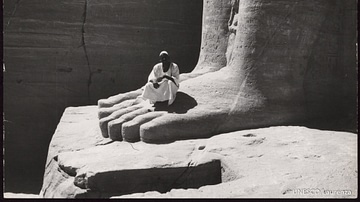
Collection
UNESCO's Nubia & Abu Simbel Campaign
This collection is really dear to us as it is the fruit of our new collaboration and partnership with the UNESCO Archives. They have digitized a vast amount of resources that can be found on their platform and you can read all about their...
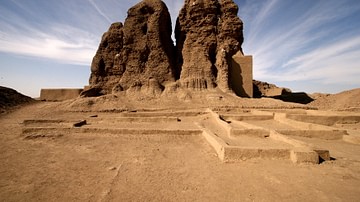
Article
Interrelations of Kerma and Pharaonic Egypt
The vacillating nature of Ancient Egypt's associations with the Kingdom of Kerma may be described as one of expansion and contraction; a virtual tug-of-war between rival cultures. Structural changes in Egypt's administration led to alternating...
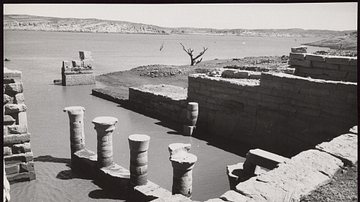
Image
Greco-Roman Temple in Nubia
Greco-Roman Temple, the largest in Nubia after the temples at Abu Simbel, constructed at the time of Augustus upon another building from the 15th century BCE.
Kalabsha, Nubia, Egypt - October 1959
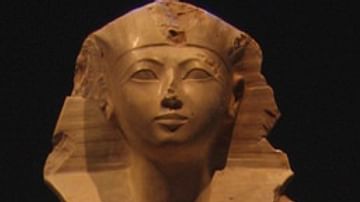
Definition
Hatshepsut
Hatshepsut (r. 1479-1458 BCE) was the first female ruler of ancient Egypt to reign as a male with the full authority of pharaoh. Her name means "Foremost of Noble Women" or "She is First Among Noble Women". She began her reign as regent to...
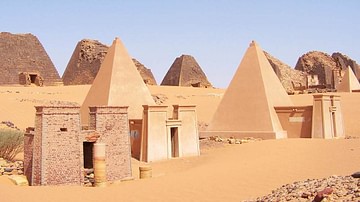
Definition
Ergamenes
King Ergamenes (also known as King Arkamani I, r. 295-275 BCE) was the greatest king of the city of Meroe, Kingdom of Kush (located in modern-day Sudan) who broke free from Egyptian dominance to help direct a wholly distinct culture. The...
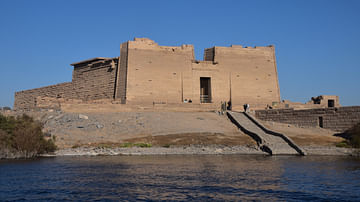
Image
Temple of Mandulis, New Kalabsha
The Temple of Mandulis (also known as the Temple of Kalabsha) is a Roman Period Egyptian temple built as a tribute to Mandulis, a sun god of ancient Nubia. It was constructed by Emperor Augustus around 30 BCE, presumably on the site of an...
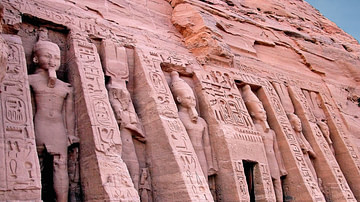
Definition
Abu Simbel
Abu Simbel is an ancient temple complex, originally cut into a solid rock cliff, in southern Egypt and located at the second cataract of the Nile River. The two temples which comprise the site were created during the reign of Ramesses II...
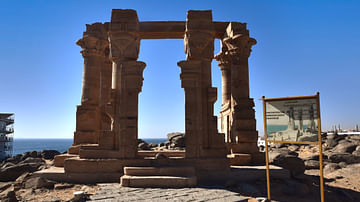
Image
Kiosk of Qertassi, New Kalabsha
The Kiosk of Qertassi is a small but elegant Roman kiosk with four lotus-headed columns inside and two Hathor pillars at the entrance. It dates to the early Roman period (1st century CE) and resembles the Kiosk of Trajan in Philae. The monument...
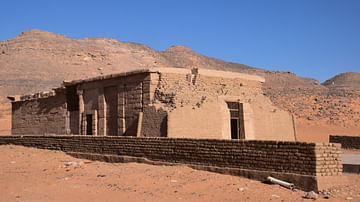
Image
Temple of Amada, Egypt
The Temple of Amada is the oldest temple ever found in Nubia. It is located at the site of New Amada, an archaeological complex containing three ancient Nubian monuments spared from the rising waters of Lake Nasser. The monument is a small...
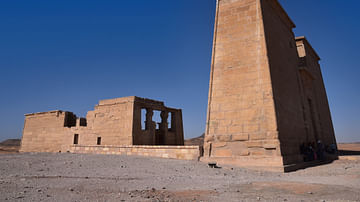
Image
Temple of Dakka, Egypt
The Temple of Dakka is a Meroitic, Ptolemaic and Roman temple located in New Wadi es-Sebua, a temple complex area in southern Egypt located on the banks of Lake Nasser. It was placed in its present location as part of the large rescue effort...